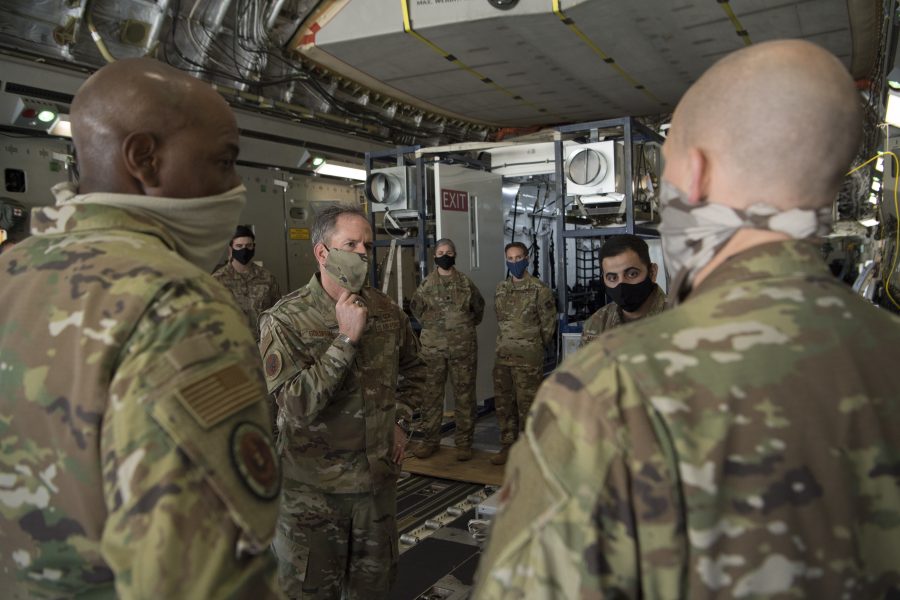The Air Force must adapt how it trains and operates because the coronavirus is going to be a reality for a while, Air Force Chief of Staff Gen. David Goldfein told his commanders in a new letter.
“We’re up against a wicked enemy in our midst … and it will call on all of our resources and our courageous leadership to defeat the virus,” Goldfein wrote in an April 28 letter to commanders obtained by Air Force Magazine.
The Air Force recently completed a mission “reset,” in which major commands outlined essential missions and how to adjust resources to do what is most important during the pandemic. Now it’s time for another reset, one that is focused on “living and operating with a cyclical virus in our midst,” Goldfein wrote.
Current predictions show a vaccine is still 18 months away, so the Air Force must find ways to survive and operate in a world where the virus keeps coming back. The service has the capability to do this—with chemical, biological, radioactive, nuclear, and explosives weapons training and equipment—it just has not been a requirement recently.
“It’s time to dust off those Ability to Survive and Operate manuals,” Goldfein wrote. “Many of us grew up in the age of Apple Orchards, MOPP levels, operations with PPE, aircraft decontamination procedures, etc. While we have not required it in recent years given our focus on the Middle East, the ability to survive and operate in a CBRNE environment is in our DNA.”
Goldfein ordered major commands to plan local exercises in the coming weeks to practice these capabilities, where Airmen will train and fly in MOPP gear and decontaminate aircraft, but instead of the main focus being on chemical and radiological threats, it will be on operating with COVID-19 present. No two bases are the same, so each installation will have to plan their own exercises.
The goal is to “modify our operating procedures and take advantage of the opportunities COVID-19 presents to advance technology,” Goldfein wrote.
Each commander needs to move out, now, on the planning. Air Force leadership wants to reduce department-wide “one size fits all” guidance and give commanders flexibility to do what they think is right.
“As we have said since the beginning, don’t wait for us,” Goldfein wrote. “Take the decision authority you have been given and move out, as you in turn push decision authority to your subordinate command teams.”
Seven weeks have passed since Goldfein’s first letter to commanders about the COVID-19 outbreak, and since then the service has learned more about the virus. The Centers for Disease Control and Prevention protocols have been effective, and steps commanders have taken meant “no degradation in any of these critical mission sets, and thankfully few COVID-19 positive cases,” he wrote.
The service is working to improve its testing infrastructure, and pushing it to local bases when available. Commanders need to expect protective procedures will be sustainable for at least a year, Goldfein wrote, though the impact will be felt long beyond that.
“This is the defining moment for the Airmen we are privileged to lead,” he wrote. “For our grandparents, it was Pearl Harbor and our entry into WW2. For most of us, it was 9-11. For today’s Airmen, it is COVID-19. The command characteristic of each defining moment is the world never returned to where it was before the event.
“So until there is a vaccine, we must reset how we survive and operate in a new world where a virus is in our midst and can return at any time. We must take the long view and find new creative ways to build and sustain combat readiness. And we must take care of those entrusted to us as leaders. The nation relies on its military because we do hard things really well. We are up for this.”
